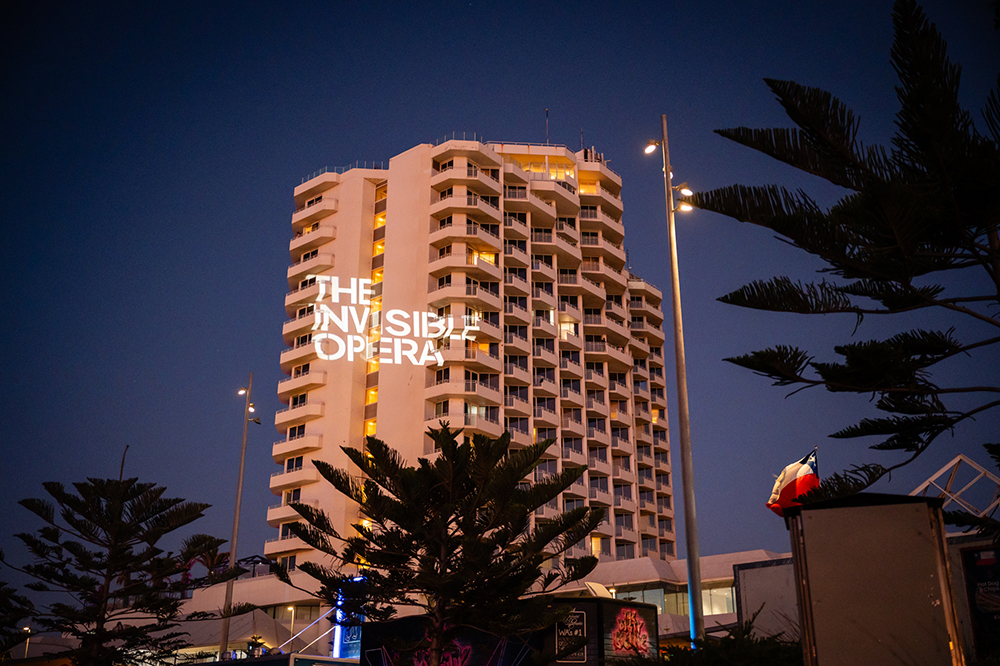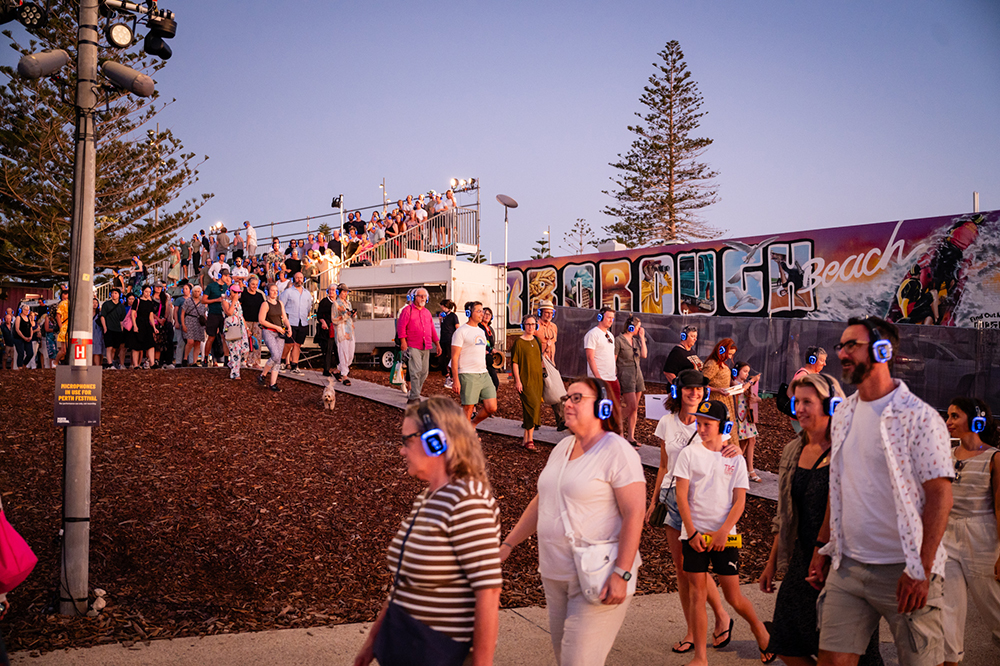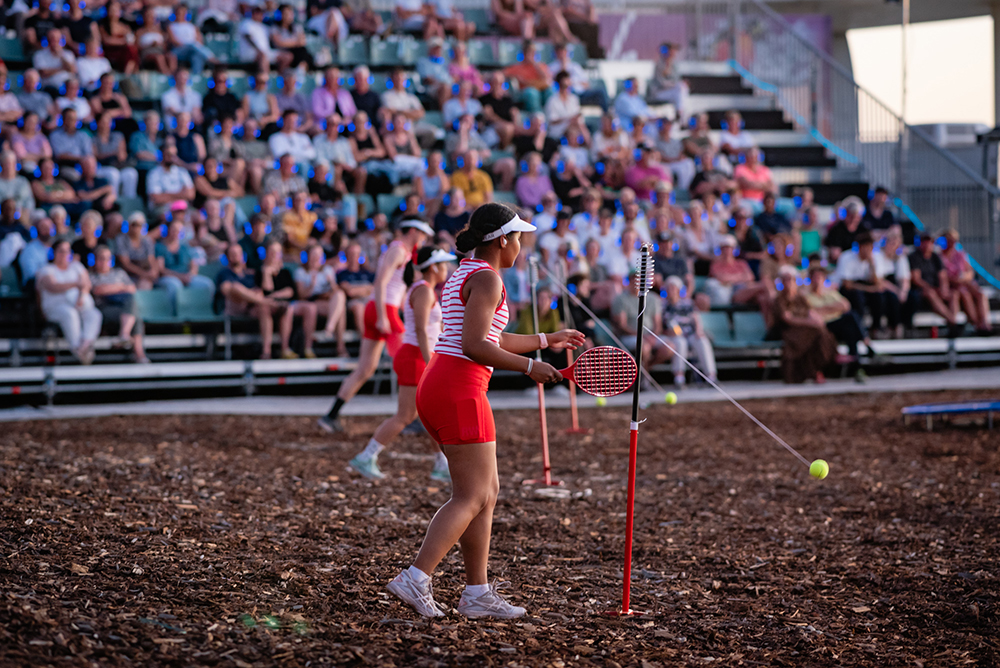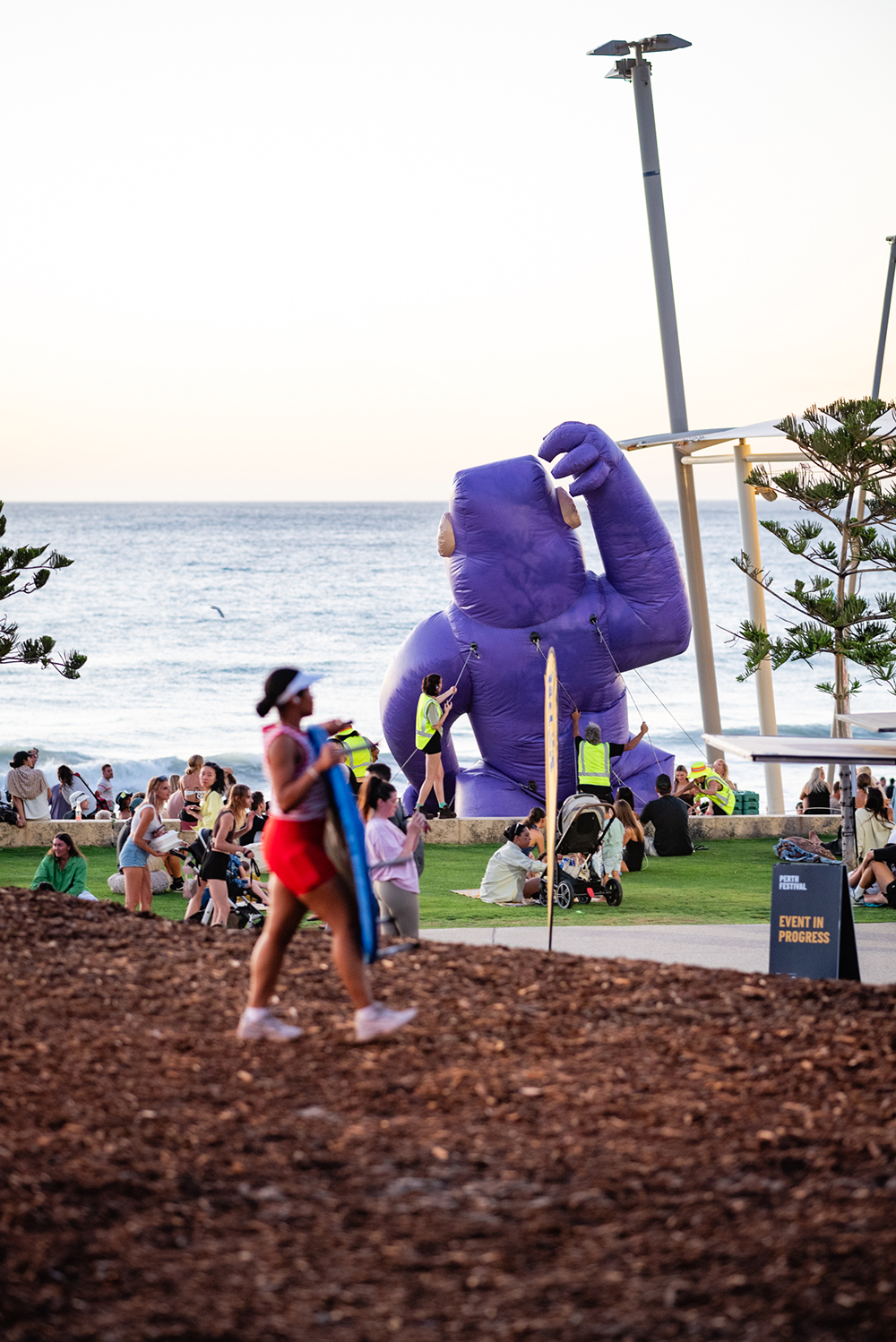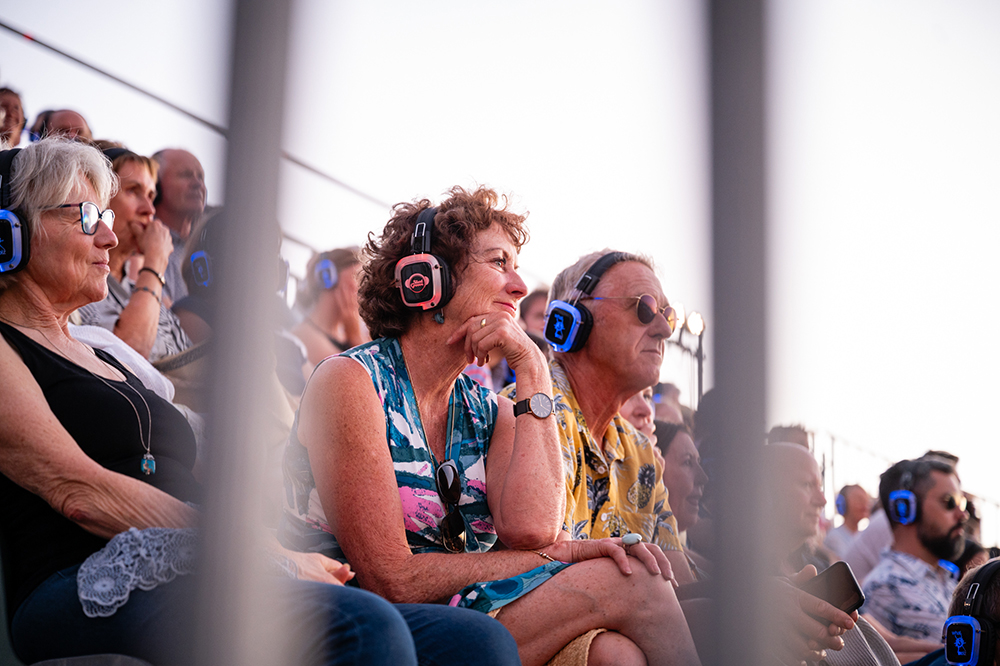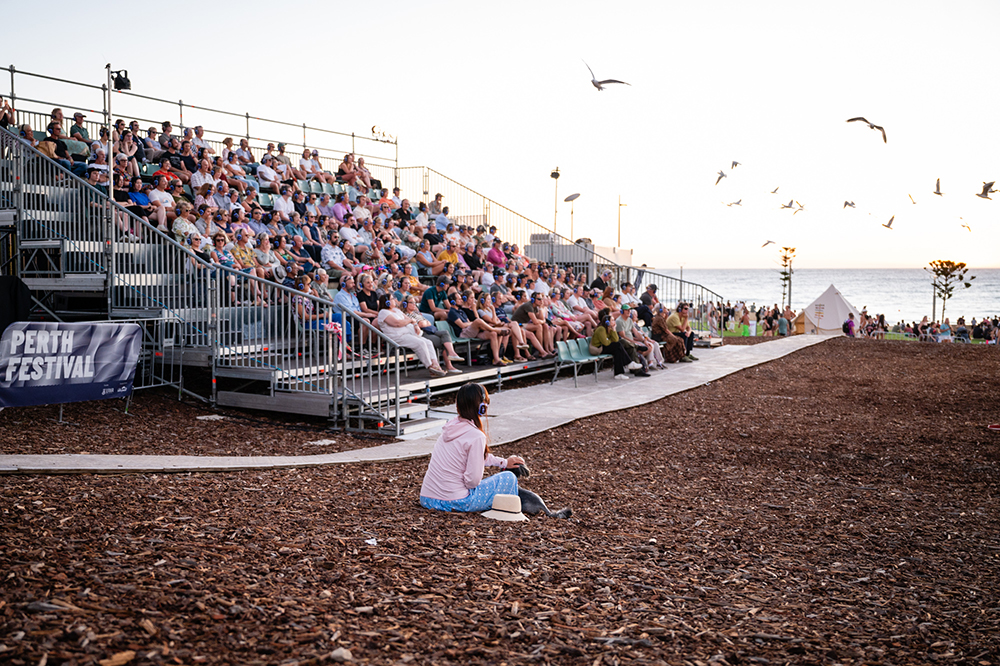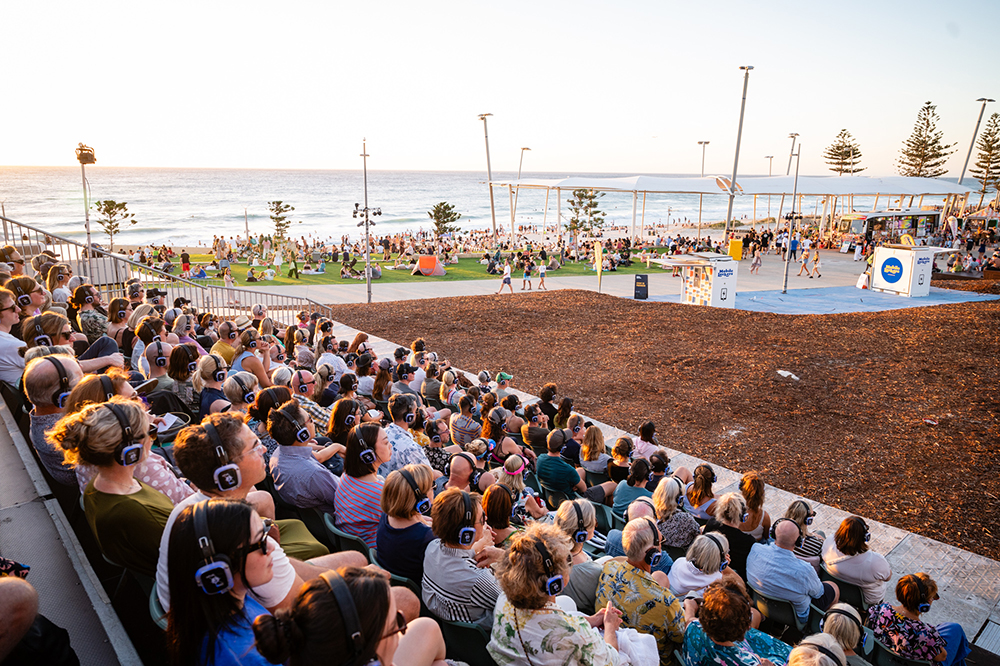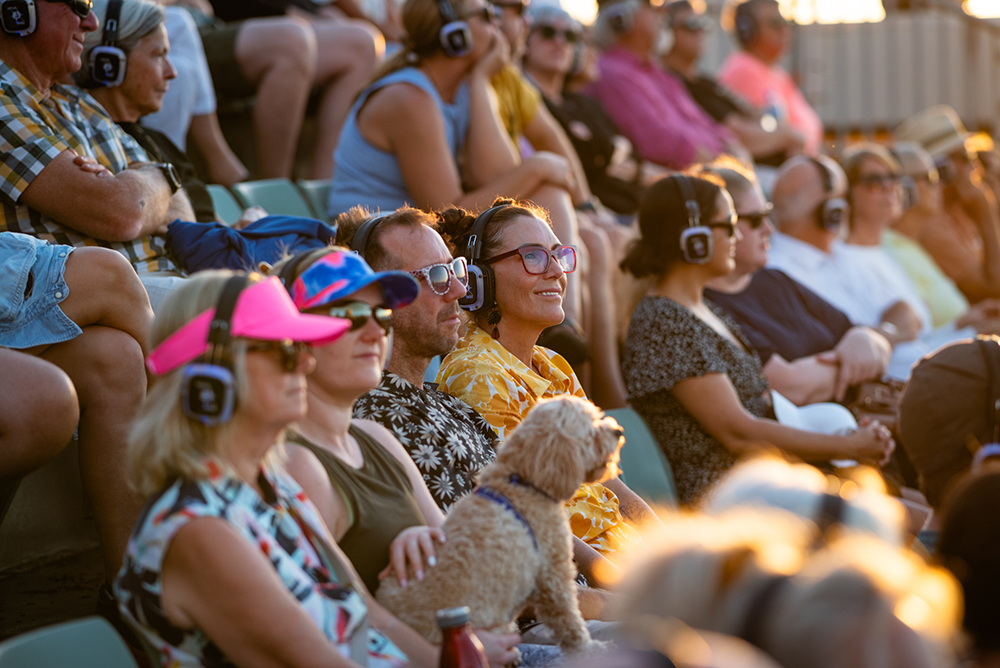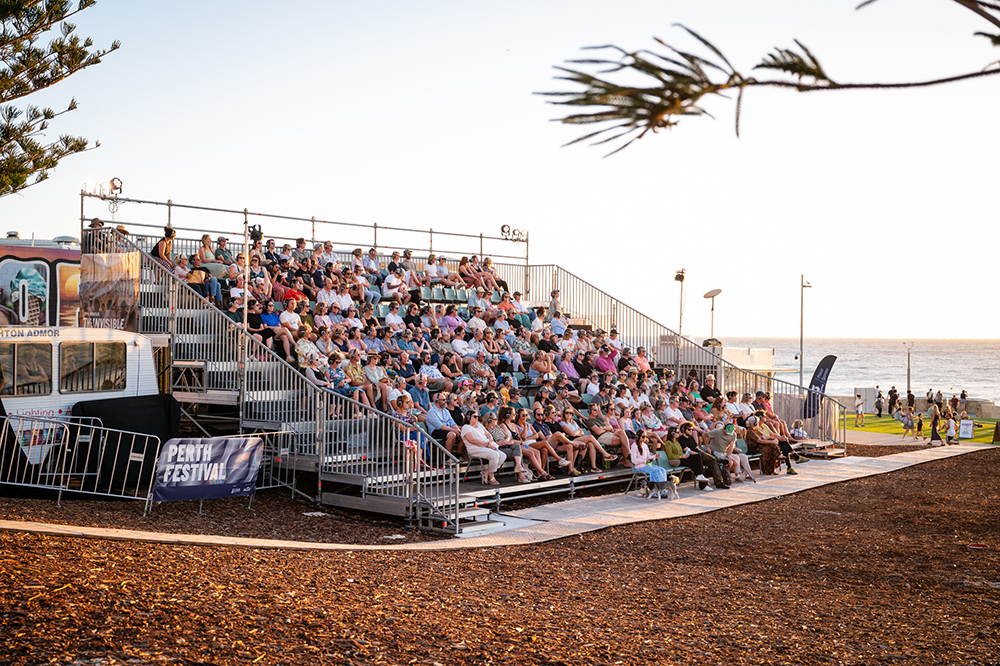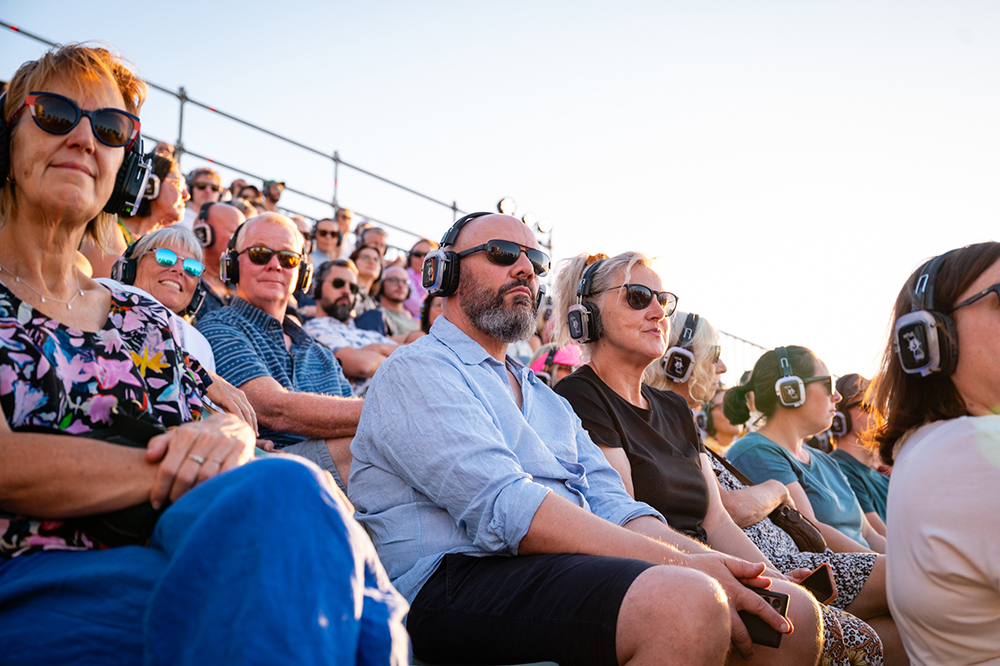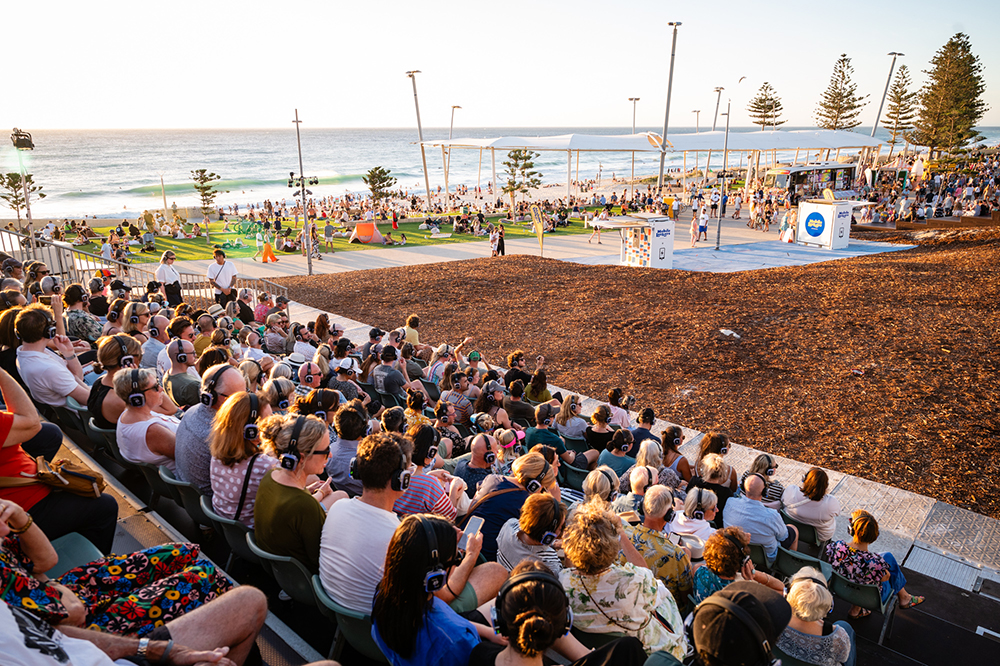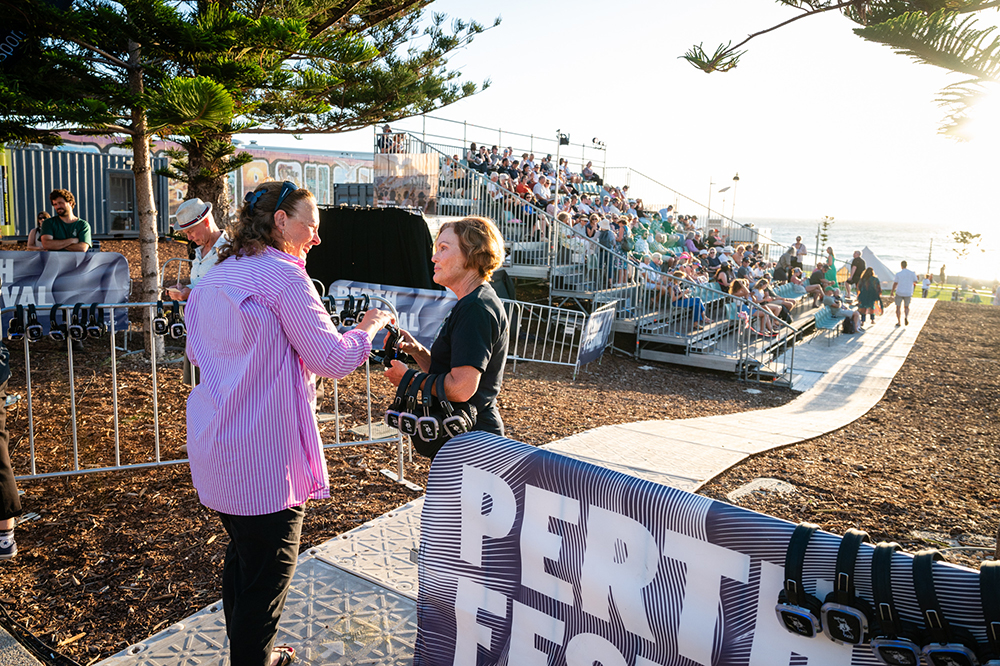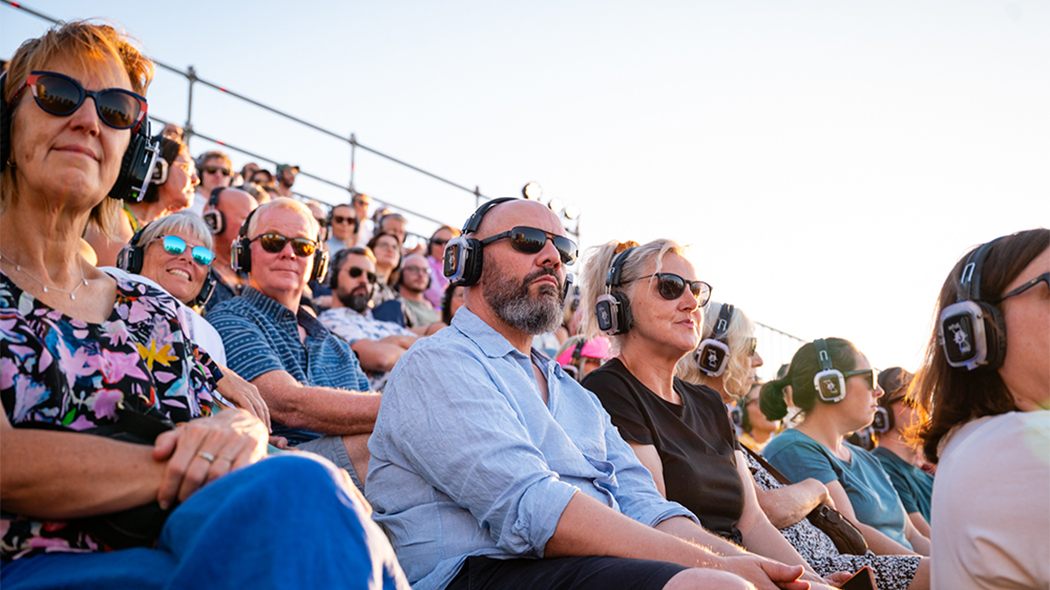
Review: The Invisible Opera at Scarborough Beach Amphitheatre
The Invisible Opera at Scarborough Beach Amphitheatre
Saturday, February 24, 2024
Every performance is ephemeral, but some are more ephemeral than others.
A little more than a hundred years ago, Marcel Duchamp set off a bomb at the centre of the art world. It has been reverberating ever since. His readymade, Fountain, a male urinal set on its back, which he first exhibited in New York’s Grand Central Palace, posed important questions about the nature of visual art. Is it the artefact or the context in which it appears that makes it art? Is it an object or a concept? And what is the role of the artist in all of this?
Sophia Brous’ The Invisible Opera, presented last week at the Scarborough Beach Amphitheatre for Perth Festival, raised similar questions about the nature of the performing arts.
Don’t take this the wrong way. Brous is by no means the first performing artist to pose these questions; the notion of framing and the blurred line between art and life have long been broken. Nor is she the first to mount a show in the twilight on a Perth beach; there is a long tradition of such dawn and dusk performances (though more commonly Cottesloe) stretching back to Chrissie Parrott’s environmental dance work, Ode to the Sea, at the 1987 Festival Fringe. It is helpful, though, to view Brous’ Invisible Opera within these contexts.
The show’s playfulness became apparent the moment the audience took to their seats and donned their headphones. The holding soundtrack was a repetition of two songs: Scarborough Fair (obviously) and Raindrops Keep Falling on My Head (a nod to Saturday’s threatened showers).
Facing north, over some 240 degrees, the frame took in, from left to right, the setting sun over the Indian Ocean; the sweep of the beach with its grassed terraces, concrete shade structure, fancy paved concourse, pine and palm trees; and, dominated by that monument to the America’s Cup, the 26-story Rendezvous Hotel, the semi-circle of buildings and bars overlooking the strand.
The soundtrack was broken by an electronified female voice delivering instructions on how to correctly wear and adjust the headphones. It was important to have them the right way around, lest the placement of sound be 180 degrees out.
Gradually, the songs gave way to atmospherics—gusting wind (left), a cawing gull (centre), the quiet cacophony of distant voices, and clinking glasses (right). The show had begun.
The one-hour performance was broken into three acts. These can best be described as (i) meditative, (ii) frenetic, and (iii) playful.
The meditation was just that. In a soft Laurie Anderson-like voice over a synthesised Brian Eno-like soundscape, Brous described the scene before us. The light, the clouds, the wind, the swaying trees, the passing people, the Rendezvous tower. For some at first, it seemed a scripted, pre-planned narrative, and bits of it clearly were—the phrase ‘Northbridge, bicurious’ had already entered the public domain—but when completely random elements came into play—a specific gull swooping low, the stripes of a passing pair of shorts, the aforementioned bicurious couple—it became apparent that Brous was working in real time, mapping the now.
Contemplating the scene as she sometimes spoke and sometimes sang had a Zen quality. You gradually centred yourself and the world around you, and were lulled into a peaceful, relaxed state.
Slowly, elements that may not have been random entered the scene. A bikini-clad woman sat on her towel immediately in front of the audience and began to feed chips to the seagulls. A young, hooded guy dressed all in black rode his bike manically up and down the concourse, weaving in and around the walkers. A taller, hooded guy, dressed in red, carrying a plastic laser sword strolled egregious past. Were they plants? The commentary picked up on each of them as though they were random, but were they? Then again, according to rumour, as word of the show had spread, various Scarborough regulars took it upon themselves to cosie up and mosie in on the act. The lines were beginning to blur.
Suddenly, the ambient music stopped. After a short pause, it was replaced by dissonant electronic static. The narrator’s voice assumed an alarmed tone, like that of a frustrated director or angry god, and began to demand changes.
“Fewer gulls!” “More skaters!” “I said a lazy horde, not a laser sword!” “The grass is too green! Give me more sand!”
What had been a gentle scene, one step removed, became intense and claustrophobic. The peaceful action became ominous and incipiently violent.
This raised another set of questions. Where did the violence and threat lie—in the scene itself or in the director’s head? Then again, as happens in films, was it merely the imposition of sinister music on a piece of neutral action? More significantly, was the audience complicit? Had their presence influenced the action? Good questions. Important questions—after all, we live in an era of passive voyeurism, where we too often take our incessant gaze for granted and regard it as harmless and innocent, our right, when perhaps it isn’t.
As though disturbed by this turn, four couples, two pairs at a time, got up, returned their headphones to the rack, and walked out of the amphitheatre. The show seemed to have upset them. Was it really too much?
The panic moved to the roundabout on the right. The singer/narrator/observer noted the presence of police cars, screeching tyres, and revving engines. It was all getting a bit paranoid. The tension was palpable and spreading.
But then, moving into the third act, there was another shift of gear. The tone softened, and a more playful element came into it. A team of stage hands in high-vis vests took to a terrace and began to assemble a giant inflatable gorilla. Three lycra-clad dancers carried totem tennis poles and exercise trampolines onto the amphitheatre’s woodchip 'stage’. As the gorilla waved its arms out to sea, the dancers began a choreographed exercise routine, and a small drone flew in above them.
“Is it one of ours?” the narrator asked.
The four couples who had walked out reappeared on the raised concrete plinth a hundred metres north and began a display of ballroom dancing.
The narrator didn’t always mention these things, adding a note of surprise as you turned and realised that something unannounced and obviously staged had come into play. How dare she not tell us? Is she playing tricks?
Finally, a long flatbed truck with what looked like a giant sausage roll on its tray drove into the roundabout and circled it again and again. It may have angered the other drivers, but it was very funny.
The threat had dissipated, and everyone chuckled in relief. But the show was not over. Finally, the narrator turned on the audience.
“I’ve been watching you,” she said playfully as she began to identify various members of the crowd.
“You with that stripey t-shirt and silly hat.” “You in the faded denim jacket with the red roses.”
Then, as a group, she directed us to stand, leave our seats, and move into the centre of the action on the walkway.
In this final twist, the audience became the show, while the erstwhile unintentional actors, the people coursing the concourse, became the audience. The looks of surprise on their faces were priceless as they encountered this slowly circling crowd of headphone-wearing people, their ears strangely framed in an iridescent blue light.
And that was it. The music stopped. Silence.
Strangely, it didn’t seem appropriate to applaud, as though, by doing so, everyone would make fools of themselves. Instead, the ushers collected the headphones, and the audience was free to wander off into the fully fallen night.
Some people were confused.
“That was different!”
Others, wearing a wide grin, happily skipped their way home.
Sophia Brous is an Australian artist now based in New York. She once sang songs of love and heartbreak in Melbourne bars before the limitations of the form saw her decamp to the United States. She created The Invisible Opera in collaboration with Lara Thoms, Samara Hersch and Faye Driscoll. Every performance of their wonderful work is, by necessity, unique. There are too many elements at play, too many drones in the air. Marcel Duchamp would have been delighted.
IAN LILBURNE
Photos by Miles Noel

